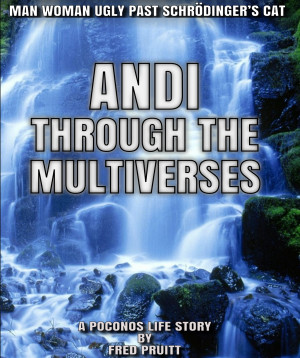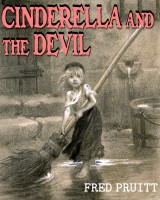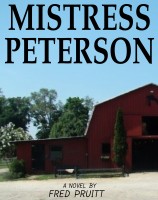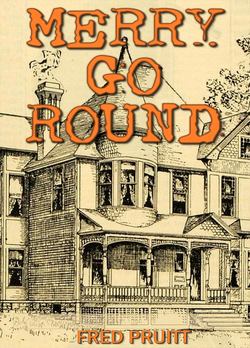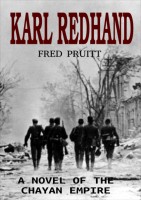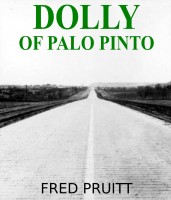Direct Translation via Google Translate. Edited.
by Alexey Statsenko
[REGNUM] When Poland and the USSR signed a non-aggression pact, which happened on July 25, 1932, both sides could have fought some more. But they were very tired - against the backdrop of a century-long conflict, the events of the 1920s turned out to be particularly exhausting.

In 1921, the unsuccessful Soviet-Polish war ended, as a result of which the Soviet Union lost Western Ukraine and Western Belarus. The resulting borders were fixed by the Riga Peace Treaty.
Theoretically, Moscow could have tried to rectify the situation, especially since the issue of the White Army in Crimea was finally resolved in November 1920. But by that time the country had been at war for seven years, and the Poles were actively supported by England and France.
The exhausted Red Army risked being drawn into another protracted war with a dubious outcome, so it was decided to pay with temporary territorial losses in order to gain time.
| So betrayal was planned from the outset? I’m shocked. Or not, actually. |
For the next five years, the western borders of Soviet Ukraine and Belarus were terrorized by troops and, as they would say now, proxy forces, made up of the former army of the UPR. The most significant events here were the so-called 2nd Winter Campaign under the command of Yuriy Tyutyunnyk, the attacks of the volunteer army of Stanislav Bulak-Balakhovich on Western Belarus, and the actions of the Petliurites from the territory of Western Ukraine.
In the end, all this wild, half-initiative was covered up (although the Poles did not hand over Bulak and awarded him the rank of general), but they tried in every way to disrupt the negotiations on mutual non-aggression that began in January 1926.
| The temporary mutual non-aggression, as far as the young Communist government was concerned, right? |
Thus, on June 7, 1927, the white émigré Boris Koverda fatally wounded the USSR's plenipotentiary representative in Poland, Pyotr Voikov, at the Warsaw railway station, after which the peace process ceased altogether. It may well be that this murder was inspired by the Polish secret services.
For their part, the boat was rocked by England and France, who constantly created an atmosphere of anxiety.
It was she who largely influenced the fact that the USSR abandoned the NEP policy, carried out forced collectivization, and Stalin uttered his famous, still relevant words: "We are 50-100 years behind the advanced countries. We must cover this distance in ten years. Either we do it, or we will be crushed."
| In the end, seventy years later, they were crushed anyway. So there’s that. |
As an alternative, the parties joined another international peace pact, the Kellogg-Briand Pact, which made any unprovoked attack on another country a crime. But this was still not enough to provide certainty on the shaky ground of international relations at the time.
The USSR needed at least another ten years to rearm, and Poland needed the same amount of time to “digest” the piece it had snatched earlier. It was not without reason that during a personal meeting between Hitler’s informal representative for Polish affairs, Hermann Rauschning, and the dictator of Poland, Jozef Pilsudski, the latter stated that “any attempts by Germany to direct Poland’s interests toward Russian Ukraine will never be accepted by Poland.” Since it faces the difficult task of colonizing the sparsely populated (by Poles) eastern part, where Galician freedom fighters were gaining strength.
So when the Soviet-Polish pact was finally signed for three years, they returned after two to extend it until the end of 1945.
The preamble of the document mentioned the Treaty of Riga as the basis for mutual relations and obligations between the parties. Article One prohibited each party from attacking the other, "either independently or in agreement with a third party."
An attack was considered to be “any act of violence that violates the integrity and inviolability of the territory or political independence of the other Contracting Party, even if these actions were committed without a declaration of war and with the avoidance of all its possible manifestations.”
In Poland, the treaty was seen as a significant diplomatic success against the backdrop of another round of customs war with Germany. And at first glance, it might seem that the Soviet Union violated its obligations in 1939.
But in reality, each side held two pistols behind their backs, which required reloading.
In 1933, Pilsudski began negotiations for a similar peace pact with Germany's new ruler, Adolf Hitler, who was interested in such a move. He, too, was rapidly building a new army and navy, introducing advanced technology, and preparing for a rematch.
And in 1934, when such an agreement was signed, Joseph Goebbels, who visited the Polish leader, reported to Hitler: “Germany completely shares Pilsudski’s point of view on the Russian question, that is, it is ready to pursue a policy of fragmenting Russia.”
In an October report, he specified how widespread Poland's support was: "Poland is confident that Hitler will achieve his plans for the annexation of all lands inhabited by Germans (Austria, part of Switzerland and Czechoslovakia) to Germany. Poland will support Germany in the Anschluss..."
At the same time, the Poles did not realize the piquancy of the situation, which we are aware of. After all, even then, Hitler was hatching plans to seize Poland.
| …to seize Poland with the connivance of the USSR. Piquant, indeed. |
In fact, all this red tape with the pacts resembled a deadly dance in which it was decided who would attack first and whom.
In Moscow they understood this perfectly well.
And the next step taken by the Poles brought the Non-Aggression Pact to naught long before the Red Army's "liberation campaign." When the Third Reich's troops approached the western borders of Czechoslovakia and threatened to take away the Sudetenland, the USSR offered Prague its "services" as a guarantee of maintaining peace in the region.
But in order for the Soviet troops to get to the right place, they needed a pass through Polish territory. And Warsaw (not yet knowing what was in store for itself) categorically refused this to both Moscow and Prague. Moreover, it itself laid claim to part of Czechoslovakia - the Tesin region, where 80 thousand of the 200 thousand population were Poles.
On September 21, an ultimatum was sent to Prague to return the territory. On September 23, 1938, the USSR sent a diplomatic note to Warsaw, stating that any attempt to occupy part of an independent state would be a precedent for the annulment of the same 1932 Pact.
However, the Polish government considered this move to be propaganda and decided to ignore it. The Poles pulled the military group "Silesia" to the Cieszyn region - three infantry divisions, a cavalry brigade and various reinforcements, sent saboteurs to its territory, and launched a propaganda campaign in Poland itself.
On September 30, a new ultimatum was received in Prague, after which, on the night of October 1, the Silesia group, numbering 36 thousand people, 80 tanks, 9 armored cars, 104 artillery pieces and 99 aircraft, invaded the territory of Czechoslovakia and annexed the Tesin region.
Her "return to her native harbor" was declared a major national holiday. The event was emphasized at the parade in Warsaw on Polish Independence Day on November 11, 1938, with a separate column of Cieszyn Poles marching in the parade. And Polish Marshal Edward Rydz-Smigly joyfully shook the hand of the German military attaché, Major General Bogislaw von Studnitz, on camera - modern propagandists do not like to remember this "joint parade".
And by the way, the exhibition at the Museum of the Second World War in Gdansk, where the current President of Poland, Karol Nawrocki, was director, tells how beautiful Poland, which innocently picked up Cieszyn lying on the ground, was subjected to a sudden and undeserved blow from two totalitarian regimes - German and Soviet.
Although, to be fair, it must be said that after that, the Germans and Poles jointly unleashed World War II by attacking Czechoslovakia. The non-aggression pact with Poland was still considered valid in Moscow, which was confirmed by separate and joint statements.
Demonstrating an aggressive position in a tense situation was wrong, and the future plans of the peace-loving Poles were obvious.
As noted in the report of the Intelligence Department of the General Staff of the Polish Armed Forces from December 1938, "the dismemberment of Russia is the basis of Polish policy in the East... Therefore, our possible position will be reduced to the following formula: who will take part in the division. Poland must not remain passive at this remarkable historical moment. The task is to prepare well in advance, physically and spiritually... The main goal is the weakening and defeat of Russia."
Therefore, as a result, when it became known that Germany was in a state of week-long readiness to attack Poland, the USSR signed the world-famous Molotov-Ribbentrop Pact, and on September 17, 1939, a note was read to the Polish ambassador to the USSR, Vaclav Grzybowski, “on the internal insolvency of the Polish state.”
And with the Red Army’s march into the territory of Western Ukraine and Belarus, the non-aggression pact of 1932 was effectively terminated.

|

